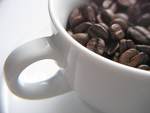About bread
 In making bread, as in any other culinary endeavor, it is wise to be certain that the proper ingredients are gathered.
In making bread, as in any other culinary endeavor, it is wise to be certain that the proper ingredients are gathered. There are several basic ingredients to bread, but one is common to all. Yeast is required. It is a living organism that is added to the dough to raise the bread. There are many types of yeast available. We recommend the packaged yeast that can be bought in any grocery store. You will likely also need flour (made from wheat - because wheat glutten is a vital element), sugar, salt, butter (or oil) and milk (or water). Recipes call for varying amounts of each ingredient. As you explore bread-making you will find a whole host of other additives.
In making bread by hand there is a definite technique which must be followed to ensure a good product. Even the process of mixing the ingredients requires a degree of care. For once the ingredients are brought together at an appropriate temperature the resulting dough must be kneaded.
Kneading is a technique of folding over the dough and pushing it down over and over. This is necessary because the glutten in the flour, when rubbed together becomes elastic and helps the bread both rise and set. The dough should be kneaded on a floured surface. If the dough is soft or sticky , add more flour and knead until it shines and has an elastic feel. Be careful not to OVER-knead the dough.
After kneading the bread is placed in a large oiled or buttered bowl. Oil the dough ball. Cover with a towel or plastic sheet and place in a warm draft-free place. Generally, you will want to let the dough rise (the action of the yeast allowed by the glutten) until it doubles in size. This usually takes about an hour.
At this point the dough should be "punched down" and perhaps kneaded a few more times. Place it back into the bowl to rise again or shape your bread into loaves or buns and put it into greased pans - depending on the recipe. The dough should rise for another half an hour or so.
Meanwhile, preheat the oven to the appropriate temperature. When the bread has risen place it in the oven to bake until it reaches the desired color. When done, loaves should feel hollow when you tap them with your finger.
The bread can be eaten hot or put on a rack to cool. If it is wrapped too early, it will get soggy. Bread lasts 4 days to a week in the bread box. It may also be frozen, but should be eaten quickly after it has thawed.
Making bread is a fair amount of work, but done properly it can reward the baker in treasures far surpassing the time, effort and materials expended. Try making a batch today! Or if you want to take an easier road to delicious wealth try using a bread machine.








